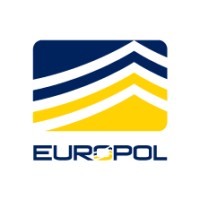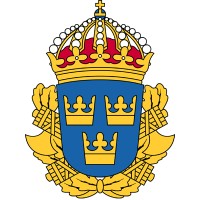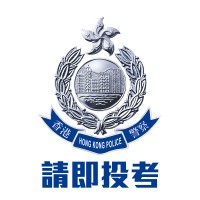
Europol Company Cyber Security Posture
europa.euEuropol is the European Union Agency for Law Enforcement Cooperation. Our main goal is to achieve a safer Europe for the benefit of all EU citizens. Headquartered in The Hague, the Netherlands, we assist the 27 EU Member States in their fight against serious international crime and terrorism. We also work with many non-EU partner states and international organisations. Our position at the heart of the European security architecture allows us to offer a unique range of services and to serve as a: - support centre for law enforcement operations; - hub for information on criminal activities; - centre for law enforcement expertise. Our operational activities focus on: - illicit drugs - trafficking in human beings - facilitated illegal immigration - cybercrime - intellectual property crime - cigarette smuggling - euro counterfeiting - VAT fraud - money laundering and asset tracing - mobile organised-crime groups - outlawing motorcycle gangs - terrorism CAREERS AT EUROPOL We seek employees who are creative, self-reliant, energetic and ready for a challenge. Prospective candidates should be prepared to work in a dynamic and fast-paced environment that requires a high level of flexibility, and should have the ability to perform well within a team. We offer job opportunities under contracts as Temporary Agents (TAs) and Contract Agents (CAs). Available Temporary Agent posts may be non-restricted (open to all EU citizens) or restricted (open only to EU citizens who are members of national services competent to fight organised crime and terrorism). We also select National Experts who are seconded by Member States, to specific fields of expertise. Current job openings are listed on our vacancies page: https://www.europol.europa.eu/careers-procurement/vacancies Learn more about us on: https://www.europol.europa.eu https://www.facebook.com/europol https://twitter.com/Europol https://www.instagram.com/europol.eu https://www.youtube.com/EUROPOLtube
Europol Company Details
europol
780 employees
201142
922
Law Enforcement
europa.eu
Scan still pending
EUR_2923285
In-progress
Between 900 and 1000
This score is AI-generated and less favored by cyber insurers, who prefer the TPRM score.
 Europol Global Score
Europol Global Score.png)

Europol Company Scoring based on AI Models
| Model Name | Date | Description | Current Score Difference | Score |
|---|---|---|---|---|
| AVERAGE-Industry | 03-12-2025 | This score represents the average cybersecurity rating of companies already scanned within the same industry. It provides a benchmark to compare an individual company's security posture against its industry peers. | N/A | Between 900 and 1000 |
Europol Company Cyber Security News & History
| Entity | Type | Severity | Impact | Seen | Url ID | Details | View |
|---|---|---|---|---|---|---|---|
| Europol | Breach | 100 | 6 | 03/2018 | EUR904050724 | Link | |
Rankiteo Explanation : Attack threatening the economy of geographical regionDescription: In one of the most significant cybercrime investigations, Europol discovered a series of sophisticated malware attacks targeting financial institutions worldwide. The malware, known as Carbanak and later iterations like Odinaff, allowed cybercriminal gangs, notably Fin7, to perform financial theft on an unprecedented scale. Exploiting vulnerabilities in banking security systems, the attackers managed to steal over €1 billion by manipulating ATM systems and point-of-sale terminals, capturing the details of millions of payment cards. The intricate operations involved using malicious documents to compromise financial companies' networks, enabling them to jackpot ATMs and siphon funds through mules into criminal accounts. The impact of these attacks highlights severe shortcomings in cybersecurity protocols within affected organizations, leading to significant financial and reputational damage. Despite arrests in Spain and the U.S., the full extent of the network and the ongoing threat posed by similar malware attacks remain concerns for the global financial sector. | |||||||
| Europol | Cyber Attack | 100 | 6 | 03/2018 | EUR507050724 | Link | |
Rankiteo Explanation : Attack threatening the economy of geographical regionDescription: In one of the most sophisticated cybercrime episodes in recent history, Europol reported a massive financial theft orchestrated by the criminal group known as Fin7 using the Carbanak banking Trojan. Over three years, Fin7 infamously siphoned off over €1 billion from financial institutions across more than 30 countries. The group leveraged malware initially obtained from the leaked source code of Carbanak, enabling them to execute 'jackpotting' attacks on ATMs and compromise sales terminals to pilfer funds. These meticulously planned intrusions often spanned months, enabling unauthorized transactions and withdrawals across numerous banks globally. The impact was severe, with Europol's involvement highlighting the international ramifications of the scheme. Despite significant arrests made in Spain and by the U.S. Department of Justice, which curtailed activities and shed light on the immense financial and security implications of such cybercriminal endeavors, the full scope and potential continuation of these activities remain a concern for the global banking sector. | |||||||
| Europol | Ransomware | 100 | 5 | 06/2018 | EUR310050824 | Link | |
Rankiteo Explanation : Attack threatening the organization’s existenceDescription: In a sophisticated cyberattack campaign, the Carbanak banking Trojan, manipulated by the hacker group Fin7, caused substantial financial loss to banks in over thirty countries. Leveraging a malware, the attackers infiltrated financial institutions' networks through phishing, enabling them to commit ATM jackpotting and compromise point-of-sale data. This operation, detailed by Europol, spanned several years with the criminals meticulously planning each intrusion, which lasted two to four months. The total theft exceeded €1 billion, marking it as one of the most significant financial cybercrimes. The impact extended beyond financial loss, raising concerns about cybersecurity measures in the banking sector and the evolving threats of sophisticated malware. Arrests in Spain and the U.S. have made some headway in dismantling the network, yet the full scope of Carbanak's reach and the current status of Fin7 remain concerning. | |||||||
| Europol | Vulnerability | 100 | 6 | 03/2018 | EUR405050824 | Link | |
Rankiteo Explanation : Attack threatening the economy of geographical regionDescription: In one of the most significant cyber heists, the Carbanak banking Trojan, attributed to the criminal group Fin7, led to losses exceeding €1 billion across banks in over thirty countries. This meticulously executed operation began with the leak of Carbanak's source code in 2013, empowering several gangs to perpetrate extensive financial theft. Employing spear-phishing tactics, the attackers lured employees of financial institutions to click on malicious documents, facilitating unauthorized network access. This access enabled them to manipulate ATMs for cash withdrawals and compromise point-of-sale systems. The process of each theft spanned months, involving mules to funnel stolen funds into criminal accounts. Despite arrests, including the gang's leader in Spain and three Ukrainian individuals by the U.S. DOJ, the full extent of the network and its operations, including potential ongoing activities, remains partly veiled. Europol's involvement in tackling this cybercriminal enterprise underscores the intricate, cross-border nature of combatting cybercrime, emphasizing the need for robust cybersecurity measures and international cooperation. | |||||||
Europol Company Subsidiaries

Europol is the European Union Agency for Law Enforcement Cooperation. Our main goal is to achieve a safer Europe for the benefit of all EU citizens. Headquartered in The Hague, the Netherlands, we assist the 27 EU Member States in their fight against serious international crime and terrorism. We also work with many non-EU partner states and international organisations. Our position at the heart of the European security architecture allows us to offer a unique range of services and to serve as a: - support centre for law enforcement operations; - hub for information on criminal activities; - centre for law enforcement expertise. Our operational activities focus on: - illicit drugs - trafficking in human beings - facilitated illegal immigration - cybercrime - intellectual property crime - cigarette smuggling - euro counterfeiting - VAT fraud - money laundering and asset tracing - mobile organised-crime groups - outlawing motorcycle gangs - terrorism CAREERS AT EUROPOL We seek employees who are creative, self-reliant, energetic and ready for a challenge. Prospective candidates should be prepared to work in a dynamic and fast-paced environment that requires a high level of flexibility, and should have the ability to perform well within a team. We offer job opportunities under contracts as Temporary Agents (TAs) and Contract Agents (CAs). Available Temporary Agent posts may be non-restricted (open to all EU citizens) or restricted (open only to EU citizens who are members of national services competent to fight organised crime and terrorism). We also select National Experts who are seconded by Member States, to specific fields of expertise. Current job openings are listed on our vacancies page: https://www.europol.europa.eu/careers-procurement/vacancies Learn more about us on: https://www.europol.europa.eu https://www.facebook.com/europol https://twitter.com/Europol https://www.instagram.com/europol.eu https://www.youtube.com/EUROPOLtube
Access Data Using Our API

Get company history
.png)
Europol Cyber Security News
Europol and Microsoft disrupt world’s largest infostealer Lumma
Lumma, the world's largest infostealer, was a sophisticated tool that enabled cybercriminals to collect sensitive data from compromised devices ...
Europol Targets Over 2,000 Extremist Links Exploiting Minors Online
Europol targets extremist online content exploiting minors, tackling rising use of AI, propaganda, and grooming across Europe's digital ...
300 Servers and €3.5M Seized as Europol Strikes Ransomware Networks Worldwide
Operation Endgame dismantled 300 servers and seized €3.5M crypto, disrupting ransomware access networks globally.
Europol cracks down on cyber fraud syndicate
Europol said the network used call centers to impersonate brokers, enticing victims with phony investment returns and fabricated profit visuals ...
Microsoft leads crackdown on ‘Lumma Stealer’ malware with DOJ, Europol, and others
Lumma Stealer has been used to steal passwords, credit cards, and bank and crypto accounts, hold schools for ransom, and disrupt key services.
Europol's Cyber Crackdown Disrupts 2,000 Domains - Here's What We Know
A major Europol-led cybersecurity operation, codenamed Operation Endgame, has delivered a significant blow to global cybercrime networks by targeting some ...
Major Illicit Drug Networks Dismantled in Global Darknet Crackdown by ICE, Europol and Law Enforcement Partners
“This historic international seizure of firearms, deadly drugs, and illegal funds will save lives,” said Attorney General Pam Bondi. “Criminals ...
Europol warns of AI-driven crime threats
Organised crime gangs are turning to AI-powered scams and payment systems to target victims, allowing them to rapidly and more cheaply scale up operations ...
Cybersecurity disclosures under the spotlight, and other cybersecurity news to know this month
Top cybersecurity news: Cybersecurity communications under scrutiny; EU seeks more powers for Europol; Solar system flaws threaten power ...

Europol Similar Companies

National Prosecuting Authority
Introduction to the National Prosecuting Authority Section 179 of the Constitution of the Republic of South Africa, 1996 (Act No. 108 of 1996), created a single National Prosecution Authority (NPA). The Office of the National Director of Public Prosecutions was established on 1 August 1998, in t

Swedish Police Authority
Vi gör hela Sverige tryggt och säkert! Att arbeta inom polisen är ett av de finaste uppdrag man kan ha. Du bidrar till samhället genom att göra hela Sverige tryggt och säkert. Oavsett om du jobbar i en civil roll eller som polis, är möjligheterna att växa med en större uppgift många. Vi är Sverig

New York City Police Department
Welcome to the Official NYPD LinkedIn Page. For emergencies, dial 911. To submit crime tips & information, visit www.NYPDcrimestoppers.com or call 800-577-TIPS. The mission of the New York City Police Department is to enhance the quality of life in New York City by working in partnership with the c

Politi
MANGE FAGLIGHEDER SAMMEN I politiet arbejder mere end 16.000 medarbejdere sammen om at forebygge og forhindre kriminalitet, så Danmark er et trygt og sikkert sted at bo og leve. Vi er alle dybt engagerede og motiverede for at gøre en forskel for andre mennesker og for samfundet som helhed. Langt

FBI Virtual Training Academy
The FBI Virtual Academy is the portal to all FBI training opportunities offered to our external partners. FBI Virtual Academy registration is open to all personnel serving in any agency within the criminal justice or intelligence community – including state, local, tribal, and international law enfo

Hong Kong Police Force
Vision That Hong Kong remains one of the safest and most stable societies in the world Our Common Purpose The Hong Kong Police Force will ensure a safe and stable society by : •upholding the rule of law •maintaining law and order •preventing and detecting crime •safeguarding and protecti

Frequently Asked Questions (FAQ) on Cybersecurity Incidents
Europol CyberSecurity History Information
Total Incidents: According to Rankiteo, Europol has faced 4 incidents in the past.
Incident Types: The types of cybersecurity incidents that have occurred include ['Cyber Attack', 'Breach', 'Vulnerability', 'Ransomware'].
Total Financial Loss: The total financial loss from these incidents is estimated to be {total_financial_loss}.
Cybersecurity Posture: The company's overall cybersecurity posture is described as Europol is the European Union Agency for Law Enforcement Cooperation. Our main goal is to achieve a safer Europe for the benefit of all EU citizens. Headquartered in The Hague, the Netherlands, we assist the 27 EU Member States in their fight against serious international crime and terrorism. We also work with many non-EU partner states and international organisations. Our position at the heart of the European security architecture allows us to offer a unique range of services and to serve as a: - support centre for law enforcement operations; - hub for information on criminal activities; - centre for law enforcement expertise. Our operational activities focus on: - illicit drugs - trafficking in human beings - facilitated illegal immigration - cybercrime - intellectual property crime - cigarette smuggling - euro counterfeiting - VAT fraud - money laundering and asset tracing - mobile organised-crime groups - outlawing motorcycle gangs - terrorism CAREERS AT EUROPOL We seek employees who are creative, self-reliant, energetic and ready for a challenge. Prospective candidates should be prepared to work in a dynamic and fast-paced environment that requires a high level of flexibility, and should have the ability to perform well within a team. We offer job opportunities under contracts as Temporary Agents (TAs) and Contract Agents (CAs). Available Temporary Agent posts may be non-restricted (open to all EU citizens) or restricted (open only to EU citizens who are members of national services competent to fight organised crime and terrorism). We also select National Experts who are seconded by Member States, to specific fields of expertise. Current job openings are listed on our vacancies page: https://www.europol.europa.eu/careers-procurement/vacancies Learn more about us on: https://www.europol.europa.eu https://www.facebook.com/europol https://twitter.com/Europol https://www.instagram.com/europol.eu https://www.youtube.com/EUROPOLtube.
Detection and Response: The company detects and responds to cybersecurity incidents through {description_of_detection_and_response_process}.
Incident Details
Incident 1: Ransomware Attack
Title: {Incident_Title}
Description: {Brief_description_of_the_incident}
Date Detected: {Detection_Date}
Date Publicly Disclosed: {Disclosure_Date}
Date Resolved: {Resolution_Date}
Type: {Type_of_Attack}
Attack Vector: {Attack_Vector}
Vulnerability Exploited: {Vulnerability}
Threat Actor: {Threat_Actor}
Motivation: {Motivation}
Incident 2: Data Breach
Title: {Incident_Title}
Description: {Brief_description_of_the_incident}
Date Detected: {Detection_Date}
Date Publicly Disclosed: {Disclosure_Date}
Date Resolved: {Resolution_Date}
Type: {Type_of_Attack}
Attack Vector: {Attack_Vector}
Vulnerability Exploited: {Vulnerability}
Threat Actor: {Threat_Actor}
Motivation: {Motivation}
Common Attack Types: As of now, the company has not encountered any reported incidents involving common cyberattacks.
Identification of Attack Vectors: The company identifies the attack vectors used in incidents through {description_of_identification_process}.
Impact of the Incidents
Incident 1: Ransomware Attack
Financial Loss: {Financial_Loss}
Data Compromised: {Data_Compromised}
Systems Affected: {Systems_Affected}
Downtime: {Downtime}
Operational Impact: {Operational_Impact}
Conversion Rate Impact: {Conversion_Rate_Impact}
Revenue Loss: {Revenue_Loss}
Customer Complaints: {Customer_Complaints}
Brand Reputation Impact: {Brand_Reputation_Impact}
Legal Liabilities: {Legal_Liabilities}
Identity Theft Risk: {Identity_Theft_Risk}
Payment Information Risk: {Payment_Information_Risk}
Incident 2: Data Breach
Financial Loss: {Financial_Loss}
Data Compromised: {Data_Compromised}
Systems Affected: {Systems_Affected}
Downtime: {Downtime}
Operational Impact: {Operational_Impact}
Conversion Rate Impact: {Conversion_Rate_Impact}
Revenue Loss: {Revenue_Loss}
Customer Complaints: {Customer_Complaints}
Brand Reputation Impact: {Brand_Reputation_Impact}
Legal Liabilities: {Legal_Liabilities}
Identity Theft Risk: {Identity_Theft_Risk}
Payment Information Risk: {Payment_Information_Risk}
Average Financial Loss: The average financial loss per incident is {average_financial_loss}.
Commonly Compromised Data Types: The types of data most commonly compromised in incidents are {list_of_commonly_compromised_data_types}.
Incident 1: Ransomware Attack
Entity Name: {Entity_Name}
Entity Type: {Entity_Type}
Industry: {Industry}
Location: {Location}
Size: {Size}
Customers Affected: {Customers_Affected}
Incident 2: Data Breach
Entity Name: {Entity_Name}
Entity Type: {Entity_Type}
Industry: {Industry}
Location: {Location}
Size: {Size}
Customers Affected: {Customers_Affected}
Response to the Incidents
Incident 1: Ransomware Attack
Incident Response Plan Activated: {Yes/No}
Third Party Assistance: {Yes/No}
Law Enforcement Notified: {Yes/No}
Containment Measures: {Containment_Measures}
Remediation Measures: {Remediation_Measures}
Recovery Measures: {Recovery_Measures}
Communication Strategy: {Communication_Strategy}
Adaptive Behavioral WAF: {Adaptive_Behavioral_WAF}
On-Demand Scrubbing Services: {On_Demand_Scrubbing_Services}
Network Segmentation: {Network_Segmentation}
Enhanced Monitoring: {Enhanced_Monitoring}
Incident 2: Data Breach
Incident Response Plan Activated: {Yes/No}
Third Party Assistance: {Yes/No}
Law Enforcement Notified: {Yes/No}
Containment Measures: {Containment_Measures}
Remediation Measures: {Remediation_Measures}
Recovery Measures: {Recovery_Measures}
Communication Strategy: {Communication_Strategy}
Adaptive Behavioral WAF: {Adaptive_Behavioral_WAF}
On-Demand Scrubbing Services: {On_Demand_Scrubbing_Services}
Network Segmentation: {Network_Segmentation}
Enhanced Monitoring: {Enhanced_Monitoring}
Incident Response Plan: The company's incident response plan is described as {description_of_incident_response_plan}.
Third-Party Assistance: The company involves third-party assistance in incident response through {description_of_third_party_involvement}.
Data Breach Information
Incident 2: Data Breach
Type of Data Compromised: {Type_of_Data}
Number of Records Exposed: {Number_of_Records}
Sensitivity of Data: {Sensitivity_of_Data}
Data Exfiltration: {Yes/No}
Data Encryption: {Yes/No}
File Types Exposed: {File_Types}
Personally Identifiable Information: {Yes/No}
Prevention of Data Exfiltration: The company takes the following measures to prevent data exfiltration: {description_of_prevention_measures}.
Handling of PII Incidents: The company handles incidents involving personally identifiable information (PII) through {description_of_handling_process}.
Ransomware Information
Incident 1: Ransomware Attack
Ransom Demanded: {Ransom_Amount}
Ransom Paid: {Ransom_Paid}
Ransomware Strain: {Ransomware_Strain}
Data Encryption: {Yes/No}
Data Exfiltration: {Yes/No}
Ransom Payment Policy: The company's policy on paying ransoms in ransomware incidents is described as {description_of_ransom_payment_policy}.
Data Recovery from Ransomware: The company recovers data encrypted by ransomware through {description_of_data_recovery_process}.
Regulatory Compliance
Incident 1: Ransomware Attack
Regulations Violated: {Regulations_Violated}
Fines Imposed: {Fines_Imposed}
Legal Actions: {Legal_Actions}
Regulatory Notifications: {Regulatory_Notifications}
Incident 2: Data Breach
Regulations Violated: {Regulations_Violated}
Fines Imposed: {Fines_Imposed}
Legal Actions: {Legal_Actions}
Regulatory Notifications: {Regulatory_Notifications}
Regulatory Frameworks: The company complies with the following regulatory frameworks regarding cybersecurity: {list_of_regulatory_frameworks}.
Ensuring Regulatory Compliance: The company ensures compliance with regulatory requirements through {description_of_compliance_measures}.
Lessons Learned and Recommendations
Incident 1: Ransomware Attack
Lessons Learned: {Lessons_Learned}
Incident 2: Data Breach
Lessons Learned: {Lessons_Learned}
Incident 1: Ransomware Attack
Recommendations: {Recommendations}
Incident 2: Data Breach
Recommendations: {Recommendations}
Key Lessons Learned: The key lessons learned from past incidents are {list_of_key_lessons_learned}.
Implemented Recommendations: The company has implemented the following recommendations to improve cybersecurity: {list_of_implemented_recommendations}.
References
Additional Resources: Stakeholders can find additional resources on cybersecurity best practices at {list_of_additional_resources}.
Investigation Status
Incident 1: Ransomware Attack
Investigation Status: {Investigation_Status}
Incident 2: Data Breach
Investigation Status: {Investigation_Status}
Communication of Investigation Status: The company communicates the status of incident investigations to stakeholders through {description_of_communication_process}.
Stakeholder and Customer Advisories
Incident 1: Ransomware Attack
Stakeholder Advisories: {Stakeholder_Advisories}
Customer Advisories: {Customer_Advisories}
Incident 2: Data Breach
Stakeholder Advisories: {Stakeholder_Advisories}
Customer Advisories: {Customer_Advisories}
Advisories Provided: The company provides the following advisories to stakeholders and customers following an incident: {description_of_advisories_provided}.
Initial Access Broker
Incident 1: Ransomware Attack
Entry Point: {Entry_Point}
Reconnaissance Period: {Reconnaissance_Period}
Backdoors Established: {Backdoors_Established}
High Value Targets: {High_Value_Targets}
Data Sold on Dark Web: {Yes/No}
Incident 2: Data Breach
Entry Point: {Entry_Point}
Reconnaissance Period: {Reconnaissance_Period}
Backdoors Established: {Backdoors_Established}
High Value Targets: {High_Value_Targets}
Data Sold on Dark Web: {Yes/No}
Monitoring and Mitigation of Initial Access Brokers: The company monitors and mitigates the activities of initial access brokers through {description_of_monitoring_and_mitigation_measures}.
Post-Incident Analysis
Incident 1: Ransomware Attack
Root Causes: {Root_Causes}
Corrective Actions: {Corrective_Actions}
Incident 2: Data Breach
Root Causes: {Root_Causes}
Corrective Actions: {Corrective_Actions}
Post-Incident Analysis Process: The company's process for conducting post-incident analysis is described as {description_of_post_incident_analysis_process}.
Corrective Actions Taken: The company has taken the following corrective actions based on post-incident analysis: {list_of_corrective_actions_taken}.
Additional Questions
General Information
Ransom Payment History: The company has {paid/not_paid} ransoms in the past.
Last Ransom Demanded: The amount of the last ransom demanded was {last_ransom_amount}.
Last Attacking Group: The attacking group in the last incident was {last_attacking_group}.
Incident Details
Most Recent Incident Detected: The most recent incident detected was on {most_recent_incident_detected_date}.
Most Recent Incident Publicly Disclosed: The most recent incident publicly disclosed was on {most_recent_incident_publicly_disclosed_date}.
Most Recent Incident Resolved: The most recent incident resolved was on {most_recent_incident_resolved_date}.
Impact of the Incidents
Highest Financial Loss: The highest financial loss from an incident was {highest_financial_loss}.
Most Significant Data Compromised: The most significant data compromised in an incident was {most_significant_data_compromised}.
Most Significant System Affected: The most significant system affected in an incident was {most_significant_system_affected}.
Response to the Incidents
Third-Party Assistance in Most Recent Incident: The third-party assistance involved in the most recent incident was {third_party_assistance_in_most_recent_incident}.
Containment Measures in Most Recent Incident: The containment measures taken in the most recent incident were {containment_measures_in_most_recent_incident}.
Data Breach Information
Most Sensitive Data Compromised: The most sensitive data compromised in a breach was {most_sensitive_data_compromised}.
Number of Records Exposed: The number of records exposed in the most significant breach was {number_of_records_exposed}.
Ransomware Information
Highest Ransom Demanded: The highest ransom demanded in a ransomware incident was {highest_ransom_demanded}.
Highest Ransom Paid: The highest ransom paid in a ransomware incident was {highest_ransom_paid}.
Regulatory Compliance
Highest Fine Imposed: The highest fine imposed for a regulatory violation was {highest_fine_imposed}.
Most Significant Legal Action: The most significant legal action taken for a regulatory violation was {most_significant_legal_action}.
Lessons Learned and Recommendations
Most Significant Lesson Learned: The most significant lesson learned from past incidents was {most_significant_lesson_learned}.
Most Significant Recommendation Implemented: The most significant recommendation implemented to improve cybersecurity was {most_significant_recommendation_implemented}.
References
Most Recent Source: The most recent source of information about an incident is {most_recent_source}.
Most Recent URL for Additional Resources: The most recent URL for additional resources on cybersecurity best practices is {most_recent_url}.
Investigation Status
Current Status of Most Recent Investigation: The current status of the most recent investigation is {current_status_of_most_recent_investigation}.
Stakeholder and Customer Advisories
Most Recent Stakeholder Advisory: The most recent stakeholder advisory issued was {most_recent_stakeholder_advisory}.
Most Recent Customer Advisory: The most recent customer advisory issued was {most_recent_customer_advisory}.
Initial Access Broker
Most Recent Entry Point: The most recent entry point used by an initial access broker was {most_recent_entry_point}.
Most Recent Reconnaissance Period: The most recent reconnaissance period for an incident was {most_recent_reconnaissance_period}.
Post-Incident Analysis
Most Significant Root Cause: The most significant root cause identified in post-incident analysis was {most_significant_root_cause}.
Most Significant Corrective Action: The most significant corrective action taken based on post-incident analysis was {most_significant_corrective_action}.
What Do We Measure?
















Every week, Rankiteo analyzes billions of signals to give organizations a sharper, faster view of emerging risks. With deeper, more actionable intelligence at their fingertips, security teams can outpace threat actors, respond instantly to Zero-Day attacks, and dramatically shrink their risk exposure window.
These are some of the factors we use to calculate the overall score:
Identify exposed access points, detect misconfigured SSL certificates, and uncover vulnerabilities across the network infrastructure.
Gain visibility into the software components used within an organization to detect vulnerabilities, manage risk, and ensure supply chain security.
Monitor and manage all IT assets and their configurations to ensure accurate, real-time visibility across the company's technology environment.
Leverage real-time insights on active threats, malware campaigns, and emerging vulnerabilities to proactively defend against evolving cyberattacks.




